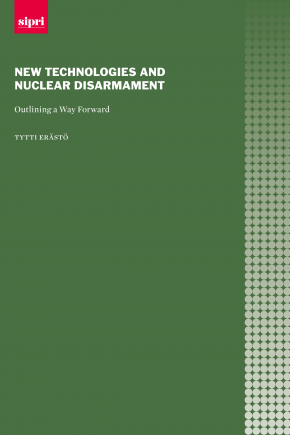New Technologies and Nuclear Disarmament: Outlining a Way Forward
This report sheds light on the impact of recent military-technological advancements on nuclear deterrence and disarmament. Noting that progress towards multilateral disarmament is hardly possible without prior and significant reductions in the largest nuclear weapon arsenals, the report views the resumption of bilateral arms control between Russia and the United States as the most important step towards disarmament at the present moment. It argues that these two countries should move away from their cold war era nuclear doctrines, which seek an ability to win nuclear wars, towards a policy of ‘minimal nuclear deterrence’, that is focused on deterring a nuclear attack.
In line with doctrinal changes, further cuts in Russian and US nuclear stockpiles could be achieved by removing nuclear weapons from regional conflict dynamics, meaning that they would no longer serve as a deterrent against conventional aggression. Such a change would help to reduce nuclear risks without undermining regional deterrence, as each side already has robust conventional forces comprised of precision-strike weapons and other advanced military systems.
At the same time, the report notes that progress towards nuclear disarmament would be complicated by long-range precision-strike weapons and strategic missile defences, which have raised the bar for credible nuclear deterrence by creating uncertainty about US adversaries’ second-strike capabilities. Lowering that bar and eventually reducing the perceived need for nuclear deterrence will require creative arms control diplomacy, including limits on strategic missile defences; stronger norms against both nuclear and conventional aggression; as well as a clear stigma against nuclear weapons.
1. Introduction
2. The nuclear deterrence paradigm: An enduring challenge to disarmament
3. New technologies and prospects for minimal nuclear deterrence in Russia and the United States
4. The path to global zero
5. Policy recommendations
6. Conclusions

